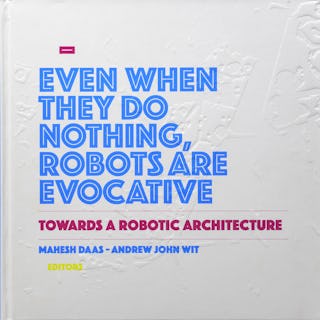Towards a Robotic Architecture
Mahesh Daas and Andrew John Wit (Editors)

The field of robotics is coming of age. Robotics and artificial intelligence represent the next cutting edge technology to transform the fields of architecture and design. The past decade's surge towards more computationally defined building systems and highly adaptable open-source design software has left the field ripe for the integration of robotics wither through large-scale building fabrication or through more intelligent/adaptive building systems. Through this surge, architecture has not only been greatly influenced by these emerging technologies, but has also begun influencing other disciplines in unexpected ways. The purpose of this book is to provide systems of classification, categorization and taxonomies of robotics in architecture so that a more systematic and holistic body of work could take place while addressing the multifarious aspects of possible research and production. As the research in this area is in its infancy, the book will play the role of bringing together scholars, designers and industry members defining their positions along the four frameworks for architectural robotics. The book aspires to be the first scholarly treatment of a broad range of robotics research in architecture and design fields. It will address how architectural robotics can open up unique and innovative possibilities both within architecture and related disciplines.
RVTR’s chapter contribution “Prologue for a Robotic Architecture” co- authored with Wes McGee of Matter Design aim to unpack the potentials for architecture to not only be robotically fabricated, but operate robotically itself within the conceptual framework of ‘responsive systems and environments’. The chapter outlines this ambition and refers to the development of nested design, fabrication and actuation domains within our Infundibuliforms project.
Order a copy of Towards a Robotic Architecture.